Tasks of the domestic sequencer
More recently, in 2016, the undisputed leadership in the genome sequencing market belonged to the United States. More precisely - the American company Illumina , which developed a model range of fluorescent sequencers.
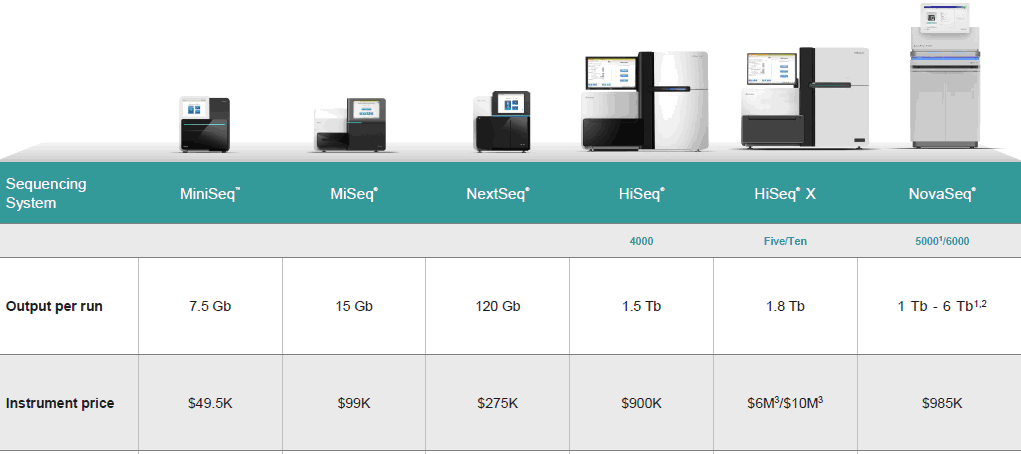
Fig. 1. Illumina Fluorescent Sequencers
( Illumina Investor Presentation, August 18, 2017 )
Improvement of these devices and the fluorescent technology used by them made it possible to reduce the cost of sequencing of the human genome to $ 1000 by mid-2016.
The second place in 2016 was occupied by the American company Thermo Fisher Scientific , which develops semiconductor DNA sequencing technology. Their sequencer Ion S5, despite its relatively modest performance (up to 12 Gb), quite adequately competed with the desktop Illumina sequencers in a niche of targeted (clinical) sequencing.
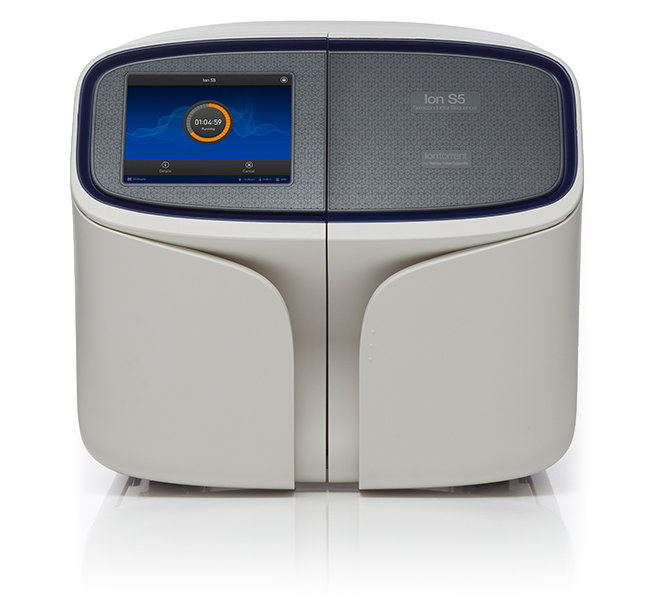
Fig. 2. Semiconductor Sequencer Ion S5
In September 2017, BGI announced the start of accepting applications for genome sequencing at $ 600, which immediately put China on the lead of genome races. This breakthrough was made possible by the creation of CNGB (China National GeneBank), a large center with 150 fluorescent Chinese sequencers BGISEQ-500.
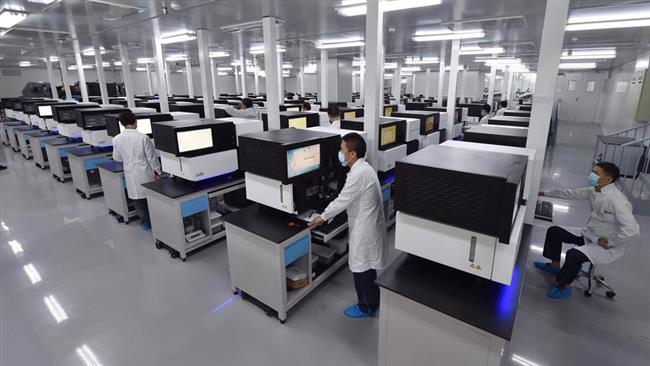
Fig. 3. In the "machine room" CNGB
http://www.presstv.com/Detail/2016/09/22/485893/China-national-gene-bank
True, the performance of one American NovaSeq 6000 is equal to the performance of 50 ... 60 Chinese BGISEQ-500. Therefore, the largest sequencing center today can be considered the Chinese company Novogene , which acquired 25 NovaSeq 6000 at the beginning of this year. Their total productivity is about a quarter of a million genomes per year. The figure is impressive, but if you annually sequence on 0.3 million genomes (~ 0.05 million in CNGB plus ~ 0.25 million in Novogene ), then on the sequencing of 100 million genomes as part of the China Precision Medicine program launched last year Initiative ”(2016 ... 2030, $ 9.2 billion) will take more than 300 years. And in order to meet the deadlines (until the end of 2030), the Chinese will have to build and equip a few dozen similar centers with sequencers.
In early 2017, MinION miniature nanoporous sequencers appeared on sale, and in May - GridION X5, developed by Oxford Nanopore Technologies (ONT, UK). The most productive model (PrometION) is in beta testing at several genomic centers and should be available in the coming months.

Fig. 4. ONT Nanoporous Sequencers
The relatively low accuracy of nanoporos sequencing (~ 90% with a single reading) does not allow these devices to compete with fluorescent sequencing machines (accuracy ~ 99.9% with a single reading) in determining single point mutations (Single Nucleotide Polymorphisms, SNPs), but a large reading length (> 10,000 bp) makes them indispensable when mapping Copy Number Variations polymorphisms (CNVs). In addition, nanoporous sequencers do a good job with identifying viruses and bacteria, evaluating their drug resistance, analyzing transcriptomes, HLA typing, paternity determination and many other objectives of sequencing that allow them to successfully fight for these niches of the NGS market (Next Generation Sequencing) .
Intervention in the genomic races of China and Great Britain intensified competition. This has not yet affected the pricing of targeted sequencing, but the cost of sequencing the human genome has decreased by 40% over the past year (from $ 1,000 to $ 600).
Is it worth Russia to participate in genomic races, or is it easier to wait for the appearance of cheap Chinese, English or American sequencers? But such an expectation can be very long. Yes, and for the power offensively. This determines the relevance of considering the possibility of developing a domestic sequencer and its provision with consumables and reagents.
The main purpose of this development is to “catch up and overtake America” (as well as China, the UK, South Korea, Australia, Saudi Arabia, etc.). Or just to catch up. Or not even catch up, but just try to make sequencing in Russia more accessible. In the first place - to achieve import substitution at least part of consumables and reagents. It will be harder to copy sequencers. But you can not just copy foreign developments, but try to improve them. And if not improved, then at least cheapen. The task is not too ambitious, but doable.
One of the projects of this kind was worked out by four institutes of the Siberian Branch of the Russian Academy of Sciences (2012 ... 2014), which unsuccessfully tried to master the technology of sequencing SMRT ( Pacific Bioscience , USA). We can also mention two attempts to develop a monomolecular sequencing technology based on Raman spectroscopy - in Chernogolovka ( InSpektr LLC , 2010 ... 2012) and in Zelenograd ( Nano Vision LLC , 2013 ... 2014) - and about the Zelenograd project RuSeq, aimed at improving tSMS technology ( Helicos , USA).
It is clear that when choosing mastered (copied / improved / "perediraemye") NGS technologies need to consider the prospects for their development. And, given the extremely limited possibilities, to evaluate these prospects only for the three most advanced technologies - fluorescent, semiconductor and nanopor.
Fluorescent technology
Sequencing machines in this case are precision scanning epifluorescent microscopes equipped with a system for feeding reagents to flow cells. A characteristic feature of the latest models is the ordering of the location of submicron DNA clusters ( Illumina , NovaSeq 6000) or DNA nanobolls ( BGI , BGISEQ-500) in disposable flow cells.
Collecting such microscopes in Russia will have mainly from imported components, so they will cost no less than their Chinese counterparts. True, these analogues are not sold yet, but in 2 ... 3 years, most likely, we will be available. Therefore, it is better not to focus on the development of fluorescent sequencers, but on mastering the production of their consumable components and reagents - flow cells and labeled nucleotides. Unless, of course, fluorescent technology in a few years will not be replaced by fluorescent. Especially since such a replacement can begin as early as 2018.
Luminescence has already been used in NGS - in the technology of pyrosequencing, which enabled 454 Life Sciences to read the first individual human genome (“Project Jim”, 2005 ... 2007). This technology, built on bioluminescent (luciferase) registration of pyrophosphate formation, is now obsolete. But to determine the luminescence is easier than fluorescence. Therefore, Illumina has long been developing fluorescent sequencing technology (the “Firefly” project).
The fluorescent sequencer may not be worse, but it is much cheaper than the MiniSeq and MiSeq fluorescent desktop sequencers, which is why its development is progressing very slowly. Nevertheless, at the ASHG 2017 exhibition (17 ... 10/21/2017) a ready-made Firefly sequencer was demonstrated, as well as flow cells (chips) and reagent cartridges necessary for its operation.

Fig. 5. Illumina Firefly Fluorescent Sequencer
https://twitter.com/illumina
The main problem in the case of orientation to the luminescent technology will be not so much the development of the device as the development of the synthesis of consumable reagents necessary for its operation - deoxynucleoside triphosphates (dNTPs) with labels capable of generating photons. Moreover, these labels should be connected with nucleosides easily cleavable linkers containing azidomethyl group.
An important feature of azidomethyl derivatives of dNTPs, the synthesis of which was developed by Russian scientists (IBC RAS) in the early 1990s, is their relatively high stability, combined with the simplicity and speed of deblocking when processing DNA clusters (or DNA nanobolls) with a tris solution (2-carboxyethyl) phosphine (TCEP). It was the complexity of the synthesis of such reagents that until recently defended Illumina from competitors, and mastering their production allowed China to overtake and overtake America.
Are Russian chemists able to master the synthesis of such reagents? Judging by the links in the patents of the company Illumina, in the 90s of the last century, this was not in doubt. And now in Russia there are 3 ... 4 groups of chemists who are able to cope with such a task (ICBFM SB RAS, LLC Syntol, IBC RAS, IMB RAS).
Semiconductor technology
Thermo Fisher Scientific has spent billions of dollars on acquiring semiconductor sequencing technology. Now the aggravation of competition requires a sharp decline in prices, and it is unlikely that she will be able to return the billions spent, especially with a profit. Third-party developers do not care about such problems, so the semiconductor technology for them still remains attractive. Especially if you manage to use ready-made pH-sensor chips, the development of which was spent millions of dollars.

Fig. 6. pH sensor chips semiconductor sequencer S5
The cost of these chips is too high, at least an order of magnitude. And you can use them (as claimed by the developers) only once. Nevertheless, some craftsmen managed to use them more than ten times, and this is clearly not the limit. Therefore, the primary task for improving (cheapening) semiconductor sequencing technology is to master the regeneration of used pH-sensing chips.
The prototype required for such a regeneration device has already been developed. More precisely, an electronic system has been developed, which reads information from pH-sensor chips and allows them to control their quality.

Fig. 7. Homemade semiconductor sequencer
https://www.youtube.com/watch?v=eojg02AUAxw
If you increase the speed and digit capacity of the ADC, then such a reader can be used as an electronic subsystem of the domestic semiconductor sequencer. True, it will still need to be equipped with a reagent supply system. And master the production of these same reagents. With a strong desire (and good funding), there are no particular problems with this.
The problem is that all such developments and their development will take 2 ... 3 years, and during this time a lot can change. For example, the accuracy and performance of nanoporous sequencing can be improved. As a result, all the efforts of "semiconductor" competitors will be in vain.
Nanopor technology
The first Minion nanoporous sequencer is similar to the first pancake - it is already “edible”, but the following ones should turn out much better. His reading accuracy is no more than satisfactory, and even then not for all applications. As far as productivity is concerned, it is obviously not enough for sequencing genomes, since at least five one-time cells cost from $ 500 to $ 900 must be spent for each genome (depending on their number in the order).
The MinION cells have embedded chips that amplify and digitize signals (picoampere currents) from 512 nanopores. GridION X5 works simultaneously with five of the same cells, but in the cells to PromethION the number of analyzed nanopores is increased 6 times (up to three thousand). This will allow sequencing of the human genome in a single cell. True, with low quality, but with long Reeds, which facilitates their accurate assembly. And it complements well the short (2x150 or 2x100), but accurate (> Q30) reads obtained by fluorescent sequencers. Therefore, nanoporous sequencing on PomethION can complement the fluorescent, but cannot compete with it. Although if the next generation cells contain not thousands, but tens or hundreds of thousands of nanopores, their use will increase the DNA reading rate, improve the quality of the data and allow genomic nanopore sequencers to compete successfully in the NGS market with fluorescent sequencers.
For most tasks of targeted sequencing, the performance of MinION (5 ... 10 Gb) is clearly excessive. Therefore, ONT plans to launch the MinION Dx (or FLONGLE) on the market - a MinION modification with an adapter insert for 128 or 256 pore cells.
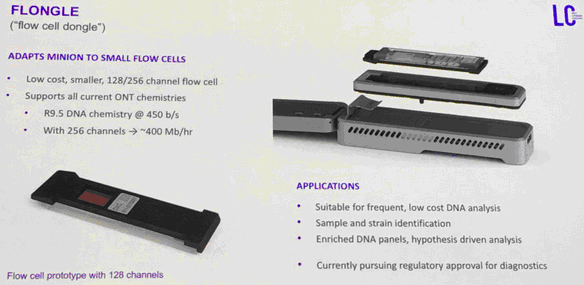
Fig. 8. FLONGLE Sequencer
Disposable cells for FLONGLE can be much cheaper, since their electronics are moved to a reusable adapter box, with which they are joined by a contact pad such as LGA (Land Greed Array).
Another compact nanopor sequencer (SmidgION) connected to a smartphone (iPhone 7 ... X) should be available in the coming months.
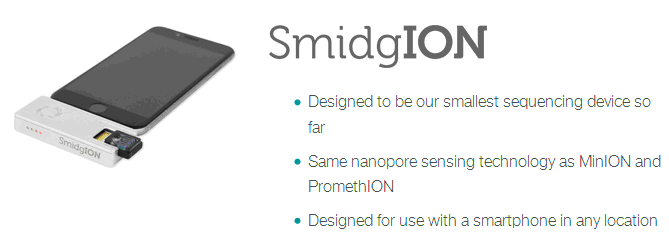
Fig. 9. The first "gadget" sequencer SmidgION
Cheap and affordable for all, nanopore sequencing can change the entire NGS market (and the whole world). But this ability will manifest itself in full only after the appearance of worthy competitors. Roche Sequencing , which has been developing its own nanoporous sequencing technology since 2014, can be one of such competitors. Judging by some publications and messages on the Internet, other competitors may appear soon.
It would be nice to acquire such competitors in Russia, but the development of sequencers, especially nanoporus ones, did not get into the list of “Priority areas for the development of science, technology and technology in the Russian Federation”, approved by Presidential Decree No. 899 of July 7, 2011. Therefore, we can only hope for geeks who are developing semiconductor sequencers in their own kitchen or electronic microscopes in private garages . You can not do without hackers who can hack software to MinION. The fact is that this sequencer can only work if you have an Internet connection. And each autonomous launch must be coordinated with the developers. But there are more strange "troubles." For example:
• Each device and each flow cell is tied to a specific user, followed by the actual address of the laboratory, where he works and conducts research. At the same time, Oxford Nanopore Technologies can obtain information about the location of each device.
• Sanctions policy: Before delivering products, Oxford Nanopore Technologies conducts an audit of each organization and new end users.
• In order to avoid entering into the List of laboratories prohibited for shipments, it is prohibited to transfer Oxford Nanopore Technologies products to third parties.
Interestingly, in accordance with the aforementioned “List of laboratories prohibited for shipment,” ONT recently refused to sell the MinION to such “militarized” organizations as Moscow State University and St. Petersburg State University.
In this regard, the top priority for Russia in the field of nanoporous sequencing is hacking the software used by the MinION sequencer.
The next task is reverse engineering of the cells of this device. And finally, the development of the formation of bilayer lipid membranes with built-in ion channels suitable for nanoporous DNA sequencing. It is better to look for biohackers (biophysicists, molecular biologists, genetic engineers, etc.) for such work elsewhere, and here at Geektimes, I would like to discuss the problems of software hacking and reverse engineering with hackers and geeks who are well-versed in electronics.
I would appreciate any questions, comments and suggestions.
Yours sincerely, genseq
All Articles